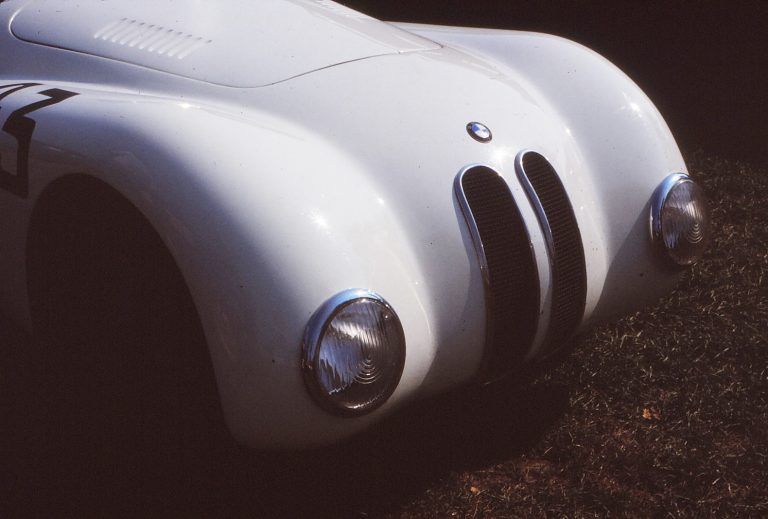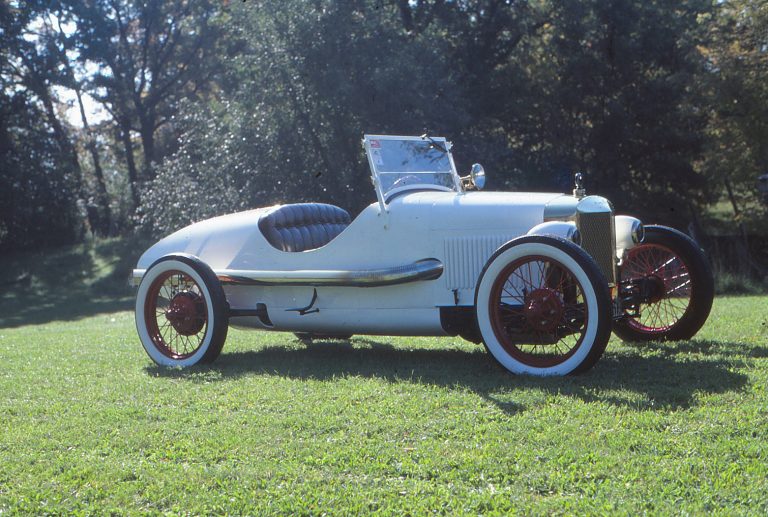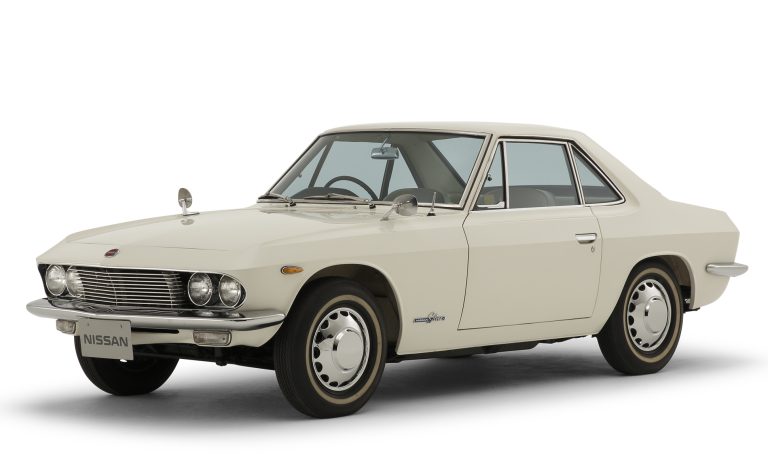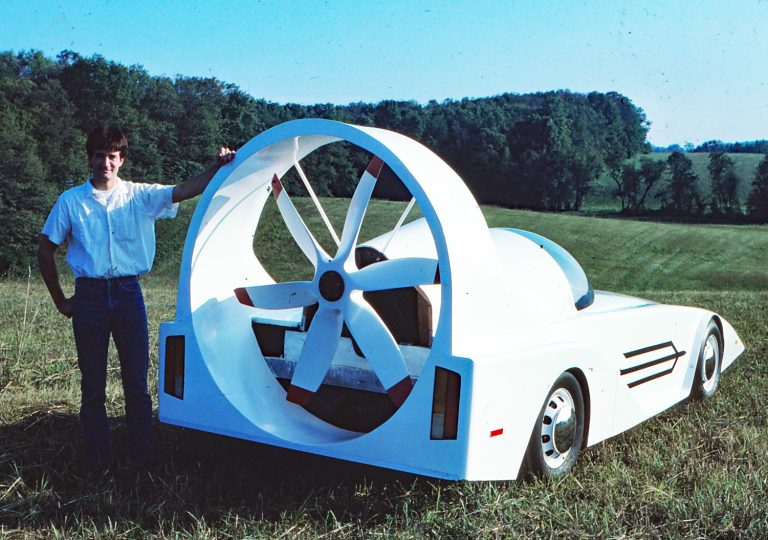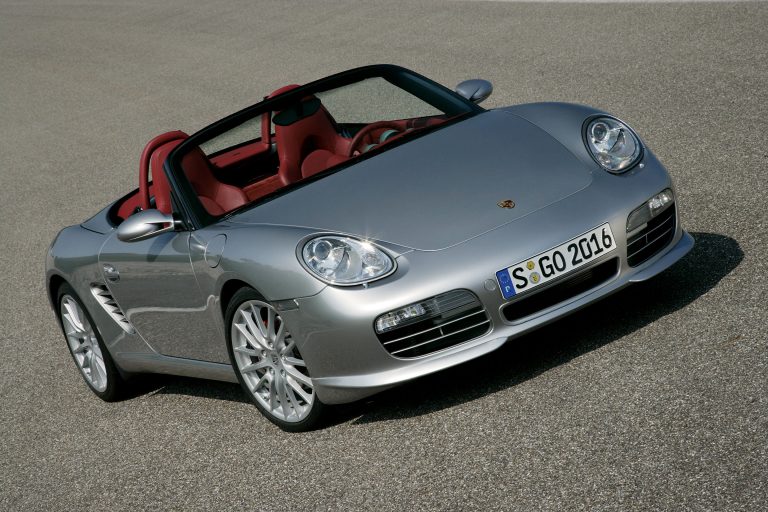History/buyer’s guide originally published in European Car, August 1996
Anyone partial to European mobiles was all the more frustrated by the new Ford Sierra XR-4i. The Sierra debuted in 1983, replacing the Cortina and Taunus , and the XR-4i was its high-performance variant. Reports filtered back to the states about the fast and funky new Ford, and it seemed those of us in America were about to be denied a fun and exciting car.
Certainly, the styling of the two-door XR-4i was controversial, taking aerodynamics to the outer limits with a blunt nose sans grill, a four-pillar greenhouse and not one but two rear spoilers – a so-called bi-plane design that cut rear lift while still allowing the Sierra to score a 0.32 coefficient of drag. It was love it or hate it. Some critics called it avant-garde, some called it weird, but nobody failed to comment on it.
Those who were able to drive one, however, seem to have little but good to say about it. The chassis, with McPherson struts of front and semi-trailing arms in the rear, coupled to P195/60R-14 Goodyear Eagle GTs on 14 x 5.5-inch alloy wheels, generated 0.8 2G on Road & Track’s skid pad. The XR-4i’s 2.8-liter overhead valve V-6 powered the rear wheels via a “crisply precise” five-speed manual gearbox. The smooth and flexible six boasted 150 bhp and 159 lb-ft of torque, which could push the 2585-lb coupe through the quarter-mile in an impressive 16.4 sec, and it could do 0 to 60 mph in 8.3 sec – numbers especially good for 1984. With this “surplus power,” Road & Track deemed the XR-4i “a predictable, tossable handler” that could be steered from either end, “first turning with the front wheels, then using the throttle to bring the rear end around.” Lifting in mid-turn yielded an easily controllable oversteer.
The news that whetted American enthusiasts appetites, however, was that the Sierra XR-4i would indeed come to the States. Yet, there were immediate concerns about what “federalizing” and “Dearborn-izing” would do to the definite German personality of the coupe. Word was that the V-6 would be replaced by “a modified version” of the turbocharged 2.3-liter four-cylinder engine used in the Thunderbird. Though the turbo four was expected to make more power and torque than the larger, naturally aspirated six, there was reasonable trepidation regarding the smoothness – or lack thereof – of the four-cylinder engine (which dated back to 1973 as the prime mover of millions of Pintos and other bottom-feeding Fords). Interestingly, however, the 2.3L was a naturalized version of the Ford of Germany two-liter OHC for used in Pintos and Capris. Though first U. S. manufacturer was in Lima, Ohio, it had by the mid ‘80s shifted to Brazil. What goes around comes around?
Indeed, the coupe came with not only a new engine but also a new name. For American consumption, it was the Merkur XR4Ti, the “T” added for “turbo,” of course. “Merkur” indicated a new corporate marketing strategy at Ford. Merkur, pronounced “mare-COOR,” is German for Mercury and would be a new international product line sold at select Lincoln-Mercury dealers. The XR4Ti would be the first product of this new lineup – on its own to carry the marque for a while. A new logo was invented, largely diamond-shaped, blue with a cross and the name “Merkur,” with “Ford Werke AG, Kőln, Germany” on the edge underneath.
The XR4Ti went on sale as a 1985 model in January 1985 on the West Coast (the rest of the country in March) was surprisingly little changed, and even its personality remained largely unscathed. The making of the XR4Ti inevitably involved added avoirdupois, U.S. bumpers being the prime culprit, bringing curb weight up to 2950 lb, although structural stiffening was also claimed. The disk-with-eight-holes alloy wheels were carried over, but the XR4Ti’s V-rated Eagle GTs were replaced by H-rated Pirelli P6s for a smoother ride. The tires, plus the added weight, lowered skid pad results to 0.767 g (per Road & Track test), however. Critics were almost unanimous, too, and finding too little on-center feel of the steering despite (because of?) its variable-ratio power rack-and-pinion system, and found the shift mechanism less than swift.
Protesters also discovered that the XR4Ti, like its European sibling, was surprisingly roomy inside. The bolstered front buckets, by Recaro and covered in cloth, drew praise regardless of the driver’s stature. The seats were manually adjustable for recline for and aft, up and down and also for lumbar support. Unexpected was a backseat that, despite the two-door configuration, provided plenty of room for two adults – though, of course, bisected by the large driveshaft tunnel. The rear seat folded 60/40 to take the nominal 17.7 cu ft of trunk room up to a total of 35.5 cu ft, which was easily accessible from the rear hatch.
Instrumentation included a boost gauge, speedo, tachometer, fuel level and coolant temperature, though the speedometer at only to 85 mph – shades of Joan Claybrook – and was calibrated in counterintuitive 15-mph intervals. Warning lights were located off the main I.P.—in the center of the dash above the console and out of the drivers line of sight. Heat and ventilation controls weren’t clustered either, with knobs and levers in different “sectors” of the dash. The steering wheel was odd, too, with a fat and grippy rim but broad spokes at 4 and 8 o’clock.
Ergonomics weren’t the XR4Tis strong suit. Air conditioning, power windows and powered outside mirrors were standard at the $16,503 list price. The option list included an interior group (power windows and AM/FM stereo radio/cassette, leather trim) and a manual tilt/slide sunroof.
The big question, however, was what was under the hood. The venerable iron block/iron head 2.3 was tuned to produce 175 bhp at 5000 rpm and 200 lb-ft torque at 3000 rpm – somewhat less than the contemporary Mustang SVO (200 bhp and 240 lb-ft at similar RPM) got from the same block, but more than the German V-6. A three-speed automatic was optional, but to keep the gearbox alive it was tuned to produce only 140 bhp. The fuel-injected turbo 2.3 (Ford EEC IV with port injection) had been considerably improved from Ford’s original efforts that exchange minimal power increases for greatly reduced reliability. In the XR4Ti, it had liquid -cooled turbocharger bearings and a new camshaft. And, a $2 million project to fight the engine’s NVH characteristics resulted in liquid-filled engine mounts and carefully tuned accessory brackets. The latter had been found to resonate at specific engine RPM and were changed. Shakes were still noticeable at low rpm, and above 5000 rpm things really began to buzz, but it highway cruising speeds the engine almost went away. Don’t rest your hand on the shift lever – the vibes were tamed, not exorcised.
As might be expected from a turbo engine with an 8.0:1 compression ratio, low-rpm power was on the weak side. But boost, coming in about 2500 rpm, perked up performance. Zero to 60 (again from Road & Track) ticked off in 7.9 sec, four-tenths faster than the XR-4i; the quarter-mile took 16 sec flat – again 0.4 ahead of its European relative. Obviously, however, some ponies weren’t showing up for work, and a tuning company named Rapido Group, working with a large West Coast dealer, went in search of them. Rep Udo bundled bundle its accessories and kits. The “Autobahn Package” tested by Road & Track increased engine output by adding an intercooler and revised exhaust; the suspension was lowered and firmed up; Goodyear Gatorbacks (225/50VR-15 rear and 205/50 VR-15 front) wrapped around special 6.5 x 15-in cast-aluminum wheels, and a conventional rear deck spoiler replaced the bi-plane wing. As a list of small items, including a leather-wrapped steering wheel and shift knob, and $5000 was added to the XR4Ti’s base price. The magazine noted an increase in performance: 0 to 60 mph fell to 7.5, the quarter-mile edged down to 15.8 second, and responsiveness improved with decreased turbo lag and more mid-range torque – attributed in part to the increased spark advance allowed by the intercooler. More impressive in raw numbers was a lateral 0.8 7 g on the R&T skid pad.
At the very end of the short ’85 model year, cloth upholstery changed from plaid to a more attractive houndstooth pattern. Ford made no notable alterations for 1986, but larger wheels and tires were welcome changes for 1987. The new wheels had flat spokes and measured 5.5 5 15 in, while the tires were 195/60HR15 Pirelli P6s. Other changes were limited to the availability of a monochrome black or white paint scheme and in midyear, improved – though still not great – sound systems were used and a rear-window radio antenna was added as a running change.
The bi-plane rear spoiler had been controversial from the start, so for 1988 Ford scrapped the double wing for a conventional and very discreet unit, making the rear window larger at the same time. Running changes during the year included “Cosworth-style” multi-spoke cast aluminum wheels, standard front and rear floor mats, optional cruise control, and – isn’t it about time – the replacement of the 85-mph speedometer with one reading to 150 mph. The latter was admittedly optimistic by about 25 mph, but it was definitely better than the old unit that was nothing but an homage to Joan Claybrook – who wouldn’t understand this car at all, anyway. Other running changes for 1988 included “double accent tape stripes” (Black and Light Argent), and right body side and bumper inserts were replaced by black inserts. Price, nevertheless, had continued to climb. Base price for the 1988 XR4Ti was $19,207; fully optioned (leather, front seat heaters, sunroof) and sold for $21,013.
The following year, the XR4Ti was unchanged, but minds had changed at FoMoCo, which even dropped the Merkur name from its literature and advertising – though the badges on the cars remained. The Scorpio, introduced in 1987 as the XR4Tis big brother, suffered a similar loss of identity and followed it down the same road to obscurity.
What went wrong? Well, success has many fathers, failure none, and a seemingly countless number of mothers-in-law all too willing to point out flaws. In late 1989, Ross Roberts, then General Manager of the Lincoln-Mercury division – and in the midst of the Australian-built Capri introduction – cited a number of flaws in the Merkur program that were not to be repeated with the Capri. “You have to launch them well. You’ve got to let the American public know it’s there,” said Roberts, suggesting inadequate promotion and advertising.
Lincoln-Mercury dealers didn’t sell the cars very well either: “We have to do a better job of training our retail organization on how to handle the product and how to handle the consumer,” he said, noting, “we didn’t do a good job of that on the Scorpio or on the XR4Ti early. We learned that knowledge is the key.”
Roberts also claimed Merkurs weren’t always up to snuff, pointing out, “the first thing we learned is that you’ve got to have quality before that car hits the shore.” One might also add that “Merkur” marque name didn’t help – too, too clever, it required print ads to include spelling instructions. Merkur owners have also complained that Lincoln-Mercury dealerships didn’t know how to service the turbocharged four or the rest of the German-built car, for that matter.
The demise of the Merkur was ultimately due to poor sales. Roberts explained that “there were estimates of up to 100,000 (sales), but that called for several products that we never did bring into this country.” But instead of spending money on the Merkur, those resources went to the big Lincolns. It was probably a wise business decision, but it was no less disappointing to Merkur enthusiasts. Indeed, Merkur sales never approach the 100,000 per year goal. In fact, from 1985 through final sales running out in 1990, total Merkur sales were 54,238, of which 42,732 were XR4Ti and 21,866 were the Scorpio. Certainly Ford had other models to import. In Europe, the Sierra was available as a four-door, a car with much less unusual profile, including notch back-conventional trunk styling and a grill between the headlamps.
Ford also sold a Group A homologation special there called the Sierra RS Cosworth. The RS Cosworth, of which 5000 were made and sold at a price of $28,500 (West Germany), had the expected louvers in the hood, fender flares and front apron, a purposeful -looking radiator opening above the front bumper, plus a single-plain wing mounted about halfway up the rear window.
More noteworthy was the Cosworth Engineering-developed 2.0-liter four-cylinder engine. Based on the 2.0-liter for the block, the 16-valve DOHC engine produced 201 BHP at 6000 RPM thanks to a Garrett turbocharger and air-to-air intercooler and other suitable tweaks. Performance: 0 to 60 and 5.46 and the quarter-mile in 14.2 sec at 98 mph. All this came with a pleasant demeanor and without the shakes of the Stateside engine, only a minimum of harmonic buzzing to let you know it still had four cylinders. Ford also put discs on all four wheels instead of the U. S. version’s disc/drum arrangement.
Alas, federal admission certification – there no doubt possible – we have been too expensive for the number that would have been sold here, so Ford never really considered importing them – though the-88 models did get the “Cosworth-style” (though narrower) multi-spoke alloy rims. Well, it was something. What would have been really exciting was the Exar eight – a five-leader Ford V-8-powered version sold by Ford of South Africa. These models worthy excuse for these and they Merkur IMSA razors in’ 86 and ‘87!
Although Merkur fizzled as a mark, the Exar for TI became what even those partial to the model call a cold car. It has gained a hard-core following that dotes on the remaining examples and rails over the failure of Ford Motor Co. to make it a success in the U. S. Today, it offers the smart inpatient enthusiast the car that is fun as delivered by Ford, but is even better as an inexpensive platform on which to build. And it’s a rare opportunity to own a genuine wine European sport coupe that, for better or worse, most Americans will never know existed.
XR4Ti: Buying a Merkur, What to look for
How can you resist: a modern limited-production German sports couple for less than $2,000? That’s just about giving them away. Indeed, a good condition, reasonable mileage Merkur XR4Ti goes on the market for only a coupla grand.
Now do the math with me. A good detail on the interior, fresh finish on the exterior, new tires (probably), new wheels (ditto), and well, figure it out, you can put a lot of money into engine and suspension upgrades and still spend less the price of the new Celica your secretary drives and off from which you will absolutely be able to blow the doors, hood and trunk. And you won’t see yourself around every corner. BMW sold more 3-Series last year than Ford sold Merkurs in the five years they were marketed here.
Still, there are things you should know before leaping in. Although the cars are cheap to buy, some parts can be very expensive to replace, some are nearly impossible to find and others can be ordered from your local Ford or Lincoln-Mercury dealership. But Ford may not be the cheapest source, and your dealer’s parts desk may not be particularly interested, so watch parts prices and check with the aftermarket, which may have a better idea than Ford. It is very easy to spend more than the purchase price to return a used XR4Ti to good condition.
We spoke with Russ Harness of Rapido Group, Howie Rayburn of RS Consultants, Neil Swanson of NSPS and Roland Zuck, all suppliers of replacement (including Ford of Europe stuff) performance and/or parts. All agree that you should buy the newest XR4Ti you can. The ‘85s have been described as “prone to numerous quirks.” A lot of upgrades and improvements were worked in over the years, and the latest cars, of course, have them all. You should also buy the one in the best condition you can find. Parts that don’t have to be replaced won’t cost you money. And get service records if you can.
Watch for rust. It’s rare, so find an XR4Ti without it. A really rusty Merkur isn’t worth repairing. Body parts and body repairs are expensive (and will make insurance collision coverage more costly, too). Windshields (around $500) and backlights (gasp, $2000!) are expensive; it may be cheaper to replace the latter with a complete hatch. Minor rusting may occur at the lower edge of the hatch. At either end, the drain holes may not be punched fully, allowing moisture to accumulate. The plastic cladding on the bottom edge of the door may come in contact with the paint as foam mounting tape deteriorates, rubbing through the paint and allowing rust to start.
There doesn’t seem to be many front caps at junkyards, so a nose-dinged XR4Ti won’t be a cheap restoration. Water leaks are unusual, the watch for clogged sunroof drains and old shrunken gaskets around the taillights, which will let water into the trunk. Look in the spare tire well. Left uncorrected, the leak will eventually corrode the bulb holder inside the lens, and a replacement taillight cost $180. The gaskets are $24 each. Not cheap, but headlights don’t last forever – the lenses getting sanded and the reflector dulls noticeably into or three years; expect to pay more than $125 each.
As you might expect, there are no hobbyist-type patch panels. Though body parts are still available through Ford, the front fenders are welded on rather than bolted, so this isn’t a driveway fixed. Do look around and under the battery, however, as it is located inches away from the exhaust manifold. The factory heat shield helps, but the exhaust heat seems to boil a battery dry in no time. Add extra insulation to the heat shield for longer battery life, though the experienced say wrapping the turbo to contain heat may save the battery – but at the cost of a turbocharger.
The stock turbo, by the way, is a durable unit. Many have been replaced with the real culprit was a clogged breather tube accumulating oil, making it look like the turbo was gone. Don’t be too fast to buy that new blower. Do check for a cracked exhaust manifold. Look for a “pencil line” between spark plug one and two. If you can hear it, the leak is probably damaged the turbo mount and possibly the turbo itself.
The humble 2.3 is rugged overall as well. Unlike some turbo motors, it has no great appetite for blowing head gaskets. It wouldn’t be a bad idea, however, to have the coolant checked for exhaust gas (and of course run a compression test). Some owners report a quart of oil disappearing in 1,500 miles. A possible cause may be valve seals; Ford changed its design about midway through the run. Early cars may have a cork valve-cover gasket – it leaks, but replacement rubber gaskets are available.
The high under hood heat and engine vibrations double-team spark plug wires, and if they don’t come apart the first time you remove them to check your plugs, they may be damaged inside and become a source of high-rpm misfiring that won’t necessarily show up on the scope. Don’t scrimp on wire quality and resign yourself to replacing them regularly. Watch also the rotor and distributor, and make sure that the fuse box has its cover. Coverless boxes are likely to corrode – especially underneath – and cause numerous electrical problems. The air cleaner should also have its lid. Without it, the engine breathes the hot air under the hood and that kills volumetric efficiency; replacing it means another trip to the wallet.
The stock radiator has a copper core with plastic end caps. These eventually will start leaking at the gasket between the court and the caps, and there’s no way to fix them. All-metal replacements are available through the aftermarket at a lower cost than the available OEM parts.
Check the A/C while under the hood; one hose in particular passes near the turbo frequently suffers from heat prostration – feel underneath for a split. Not only will the air conditioner not work, but the defroster may not either, and fixing it will cost about $200 for the hose (it’s a complex piece, but wow!) And labor, recharging the system and so on, will add to that.
The XR4Ti’s biggest problem may be its chassis. It connects you to the road but is ultra-sensitive to wheel balance, roundness and runout, and alignment and suspension bushing condition. Chassis dynamics tend to yield a mild shimmy on the highway at 68 to 70 mph – not evident 5 miles an hour slower or faster. The XR4Ti also suffers from what Merkur enthusiasts call “shake and brake,” front-end shimmy under braking. The XR4Ti has a true McPherson strut front suspension, with the strut located only by a lateral lower control arm and the anti-roll bar (without the usual leading or trailing link). Alignment is difficult to maintain – especially when the stock rubber bushings wear and get soft – and even a front end that’s perfectly aligned on the machine will go out of spec in the rigors of driving and braking, in particular. Test by touching the brakes at 40 mph.
Choices for an upgrade replacement include urethane bushings – though these can pound out and get loose, and they also can be noisy in cold weather – and Ford Motorsports Europe “Group N” (also called “blue spot”) rubber bushings available in England or from aftermarket vendors in the U.S. The upper strut mount rubber also wears and get soft, also replaceable by Group N bushings, though these will inevitably raise the front oven XR4Ti by up to ½ in. (which may not be a bad idea on an overly lowered car!). If it hasn’t been replaced, the inner lower-control-arm bushing will probably be limp on just about every XR4Ti. Ford sells complete lower control arms only, though you can get urethane or Group N bushings.
“Shake and brake” may not be caused by bushings; it could be warped rotors, the usual primary suspect anyway. Ford blamed this on air-wrench happy mechanics who overtorqued the lugs, bending the wheel hubs and the rotors in the process, and sent out a service bulletin prescribing a specific lug tightening sequence and the use of a torque wrench. Ford gave up later, however, fitting stronger hubs.
If the steering rack needs replacement, breathe deep. The list priced is over $2,000, though a used part will be less. A new air conditioning compressor will set you back about a grand, and the A/C receiver/dryer – usually a two-figure item – costs several hundred. A non-working-well heater probably means clogging of the heater core. It can be prevented by changing coolant on a regular basis and running the heater several times during the summer. But, if it’s too late for that, be forewarned that deep dash surgery on an XR4Ti is not fun. The blower fan is no joy service either; the typical cost for heater fan replacement is about $600 or more. If the heater fan runs only on high, is because the fan speed is controlled by a resistor, which in this case, has failed. Replace it for about $20. Alternators aren’t an exceptional problem, but they aren’t cheap either.
The drivetrain is stout, and the differential shouldn’t be a problem unless the engine has the kilowatt rating of the Grand Coolee Dam. The transmission isn’t a fast shifter, especially at high rpm, and, yes, they really are all like that. Be particularly gentle between first and second. The T94 transmission dates back to the early ‘60s and is probably the most marginal part on an admittedly strong car.
The CV joints in the half-shafts hold up well, though torn boots indicate neglect, replacing a half-shaft will cost about $600. The U-joints on the driveshaft usually aren’t a problem, but they aren’t available separately – if they’re bad, you need to replace the entire driveshaft. The weakest point of the drivetrain is a rubber doughnut between the transmission and the driveshaft. If you feel driveshaft vibrations, this is the probable culprit – brittle and throwing chunks. It is not an expensive repair unless neglected and breaks and the liberated driveshaft starts looking to take revenge. Ouch: Just the vibration alone can crack the tail shaft or even the bell housing.
On the inside, early dashboards cracked like crazy. Ford made changes in mid ’80s seven, and cars made after then are safe. Replacement dashes are available, though there’s more money. A cheaper repair is a molded plastic reskin. The cloth seats have held up well, though the early (pre-mid-’87) leather seats split. Ford issued a recall, however, and all XR4Tis with leather should have replacement upholstery. The later cars have loose-fit leather on the door panels; earlier cars have what Swanson calls “wingtip shoe” leather on the doors – smooth but with small perforations. All but very late cars have grey interiors; black and beige was available near the end. Most cars, by the way, had the optional sunroof and heated seats. Some owners report the dashboard warning lights will flash temporarily after starting but then function properly. The electric dipstick, which was supposed to show oil level on the dash, never worked well even when the cars were new. Finding a working one now is an improbability. Some owners have had trouble with the electric windows, but others haven’t. There are also reports of the pot metal push-button lock on the hatch breaking, but it’s an easy repair with parts costs only about $50.
If you can get past the awkward marque name and the Japanese sci-fi model designation, the Merkur XR4Ti is, as Swanson notes, “pretty quick when stock, good handling… It’s a cheap, powerful rear-wheel-drive car.” You may have to explain it to nonbelievers a little too often, but better to let the XR4Ti speak for itself – and leave them talking to themselves.
Addendum: The prices for the various bits are likely to be well out of date. It’s an article researched and written almost 30 years ago. The technical bits are likely to be correct, but parts prices? I’d like to see comments.
It seems the Thunderbird is, or is at least thought to be, a frequent target for Ford. Editors usually write the titles for articles, which is why this article never says Thunderbird anywhere in the text, nor did my article on the Ford Probe, the title at Road & Track asked, “Sporty econocar or Thunderbird stand-in?” On the other hand, a car that probably more deserved the Thunderbird comparison was the Lincoln Mark VII, a sporty personal luxury car, like a T-Bird with a Lincoln wrapper.
Who was Joan Claybrook? She was head of the National Highway Safety Administration under Jimmy Carter, and it was her idea to make cars safer by limiting automobile speedometers to 85 mph. That ridiculous concept would be eliminated under Carter’s administration’s successor. An idea that wasn’t adopted was not only foolish but foolhardy: a seatbelt on a motorcycle with a seat-pressure switch. No seatbelt, no start. I tried to find a fair assessment of Ms. Claybrooks accomplishments, for better or worse, but all Google would return are hagiographies.

















